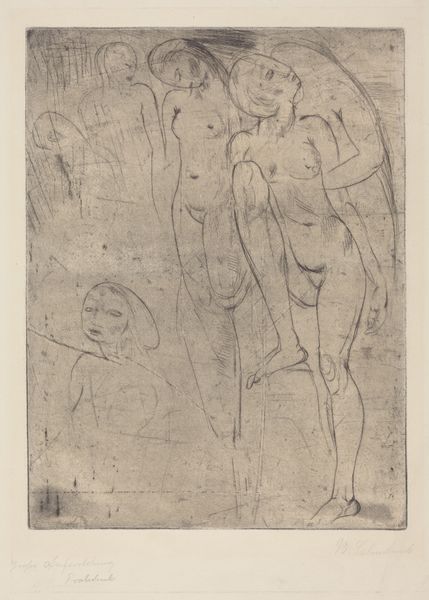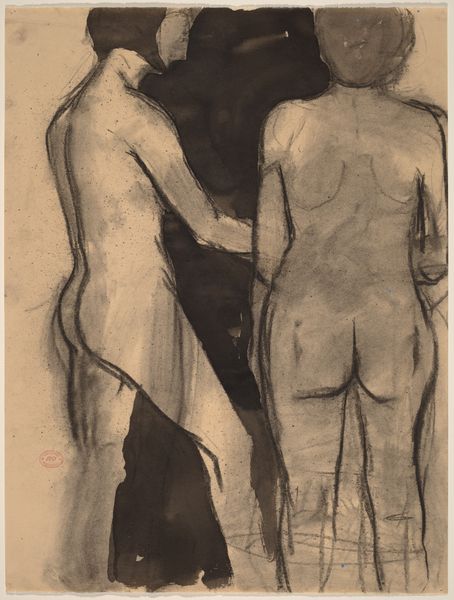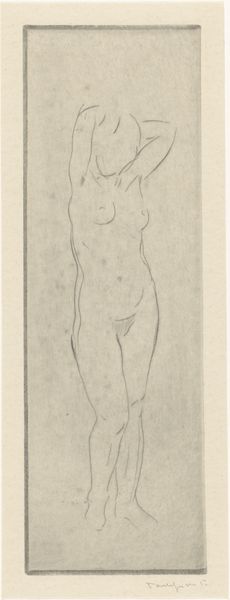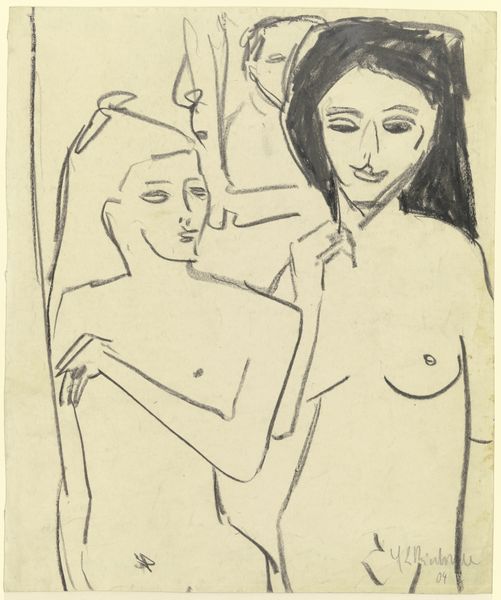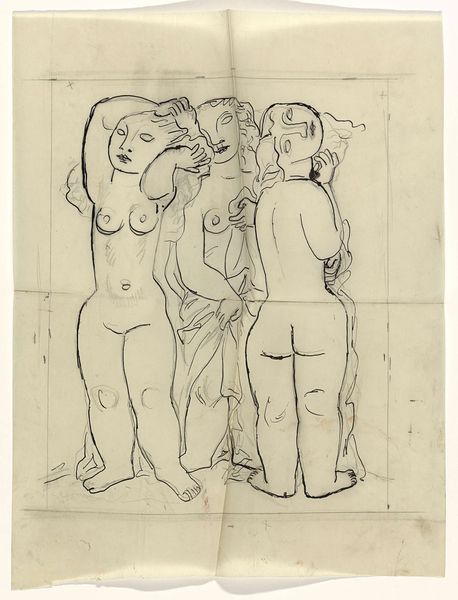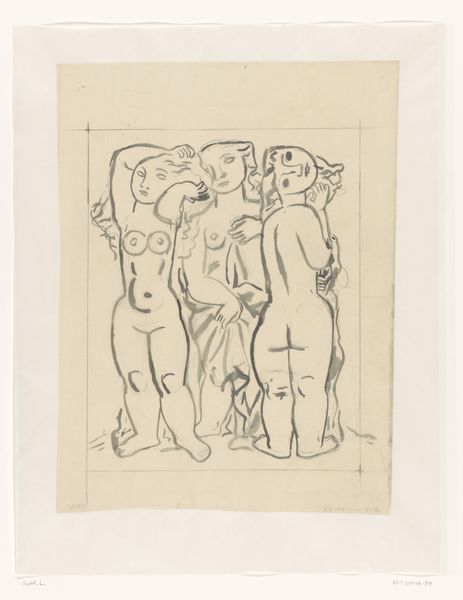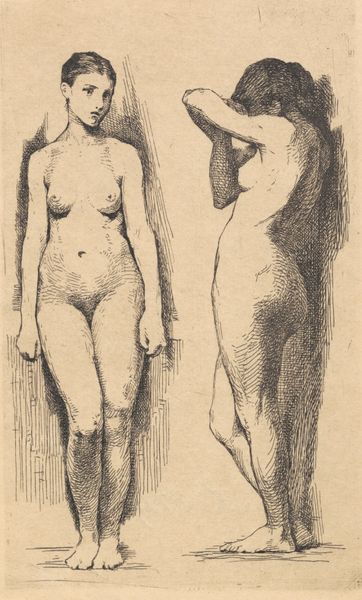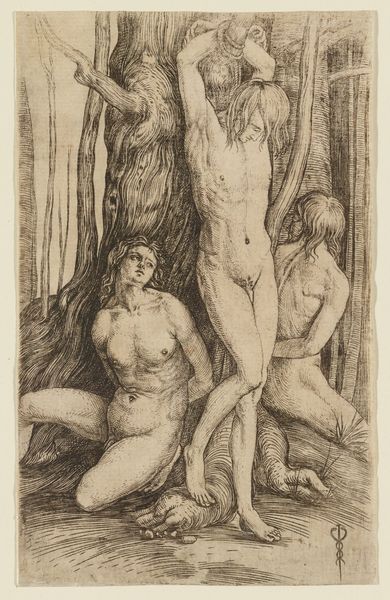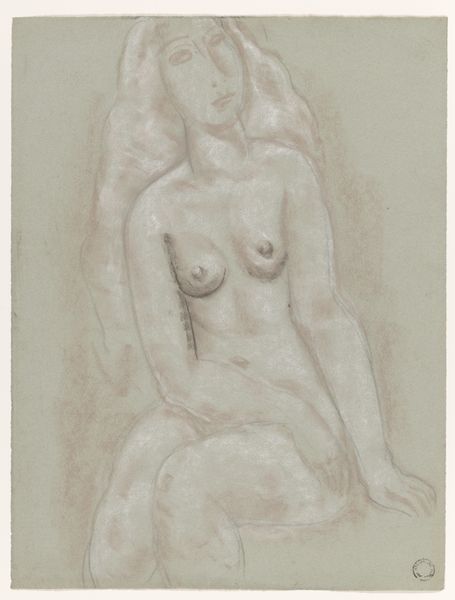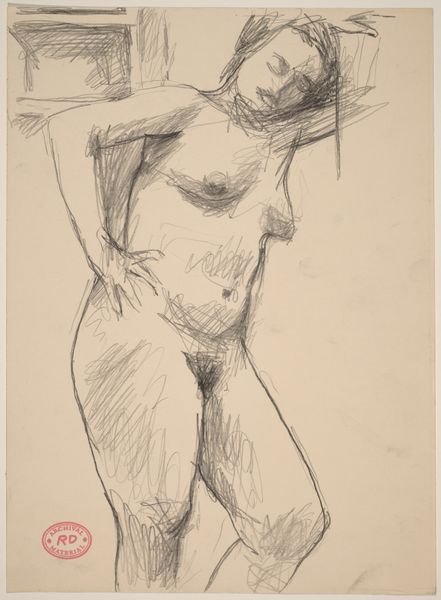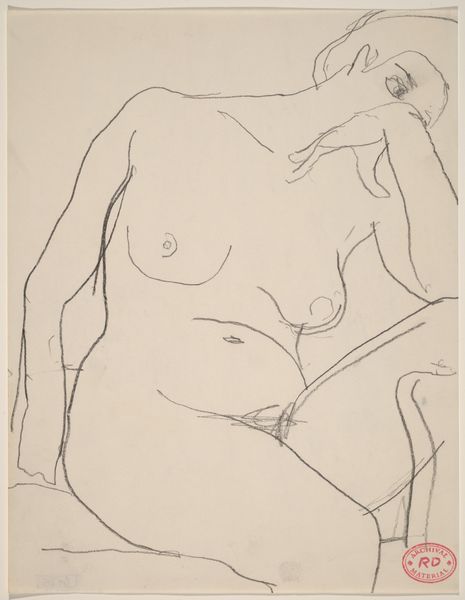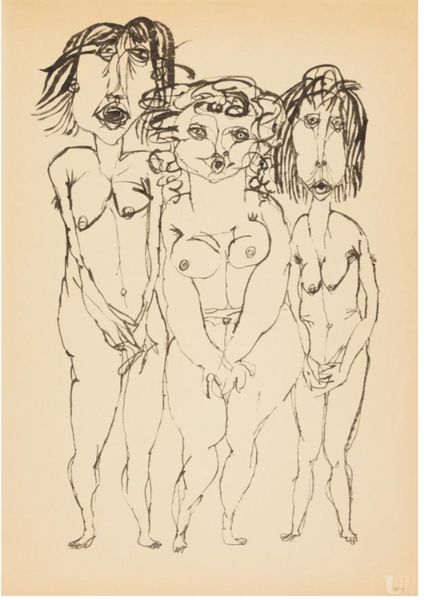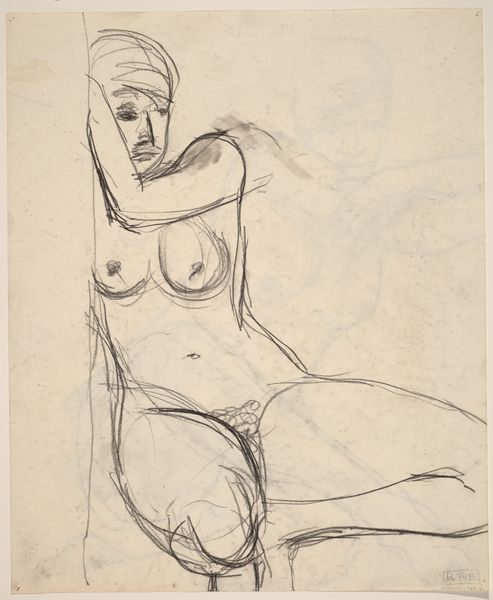
Four Women; Three Standing, One Sitting (VierFrauen; drei stehend, eine sitzend) 1913
0:00
0:00
drawing, print, etching, paper
#
drawing
# print
#
pen sketch
#
etching
#
figuration
#
paper
#
expressionism
#
nude
Copyright: National Gallery of Art: CC0 1.0
Curator: Here we have Wilhelm Lehmbruck's 1913 etching, "Four Women; Three Standing, One Sitting". It is an expressionistic print depicting the nude female form. Editor: Immediately, I notice a profound sense of melancholy. The figures seem caught in a moment of introspective despair, or perhaps quiet acceptance. What stands out is the raw materiality, you can see the clear mark making. Curator: Lehmbruck's use of the female figure is central to his larger oeuvre, exploring themes of human suffering and vulnerability in a rapidly changing world. Notice how the bowed heads, averted gazes and attenuated limbs communicate these complex emotional states, which speaks to a deeper sense of existential unease common amongst Expressionist artists during that time. Editor: This etching really lays bare the artist’s hand and process, especially considering the early 20th century. It lacks the glossiness one might expect; instead, it feels deeply connected to the physicality of both the subject matter and materials used. Curator: It reflects a turning point when many sought new ways to articulate the human condition. Lehmbruck wasn't just rendering the figure. The downward cast of the heads of all four figures recalls ancient depictions of mourning. There is something almost ritualistic about this group, bound by a shared sorrow. The woman in the foreground, seated on the ground, perhaps most dramatically embodies a kind of grief or defeat. Editor: Right, the contrast in her positioning—being grounded while the others remain upright—could represent a social or physical burden. But let’s consider access, or lack thereof, to materials at the time. Printmaking allowed artists to distribute their work more widely and the deliberate use of visible lines suggests that the artist values honesty in its production method. Curator: That is very interesting indeed, and allows for further reading in his motivations and connections to a wider cultural zeitgeist of uncertainty and yearning for change. Lehmbruck has captured a sense of the psychological weight felt by the people, particularly women, of his time. Editor: And understanding his approach, both physically and methodologically, offers deeper appreciation of this unique print. Curator: I agree. Lehmbruck leaves us to ponder the intersection between representation, emotion, and material reality. Editor: Leaving an echo that resonates with us still.
Comments
No comments
Be the first to comment and join the conversation on the ultimate creative platform.
